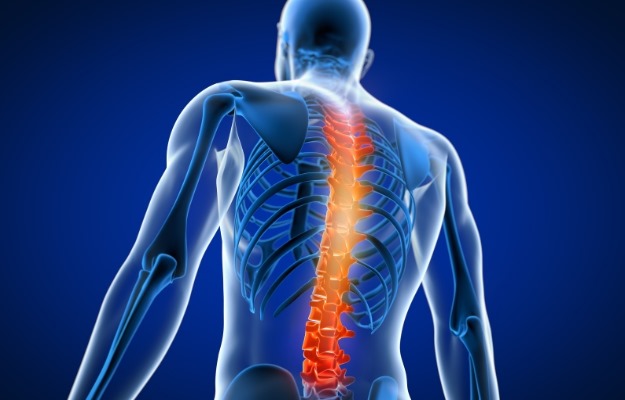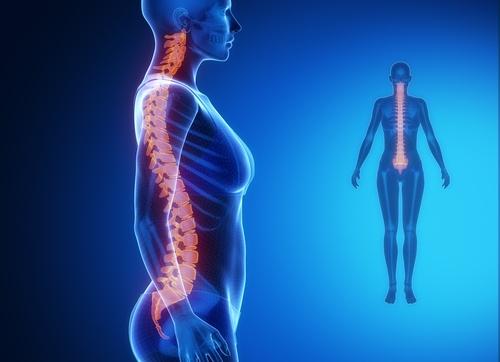Pott’s disease or the spondylitis due to mycobacterium tuberculosis is a rare but serious disorder of the spine, due to extra-pulmonary spread of the involved bacterium. According to experts like Best Orthopedic Surgeon in Karachi, it is a combination of arthritis and osteomyelitis of the spine with involvement of multiple vertebrae. Typically, the anterior aspect of the body of vertebra is involved, particularly in the thoracic spine. Read on to know more about Pott’s disease, its cause, diagnosis and treatment options:
Table of Contents
What Is Pott’s Disease?
Tuberculosis is one of the most infectious diseases caused by the bug mycobacterium tuberculosis, and a leading cause of death due to infectious diseases, particularly in the developing countries. Primarily, the bug causing tuberculosis affects the lungs, but sometimes it can travel through the bloodstream to other sites, such as the gastrointestinal tract, and the bones. Once its spread, it is called extra-pulmonary tuberculosis.
Bone tuberculosis or Pott’s disease affects the spine, joints and the long bones. Pott’s disease occurs due to the rich blood supply between the long bones and the spinal vertebrae. In the last decade, the prevalence of this disease has increased, likely due to concurrent infection with AIDS. The diagnosis of Pott’s disease can be difficult, with severe problems if left untreated.
What Are The Symptoms Of Pott’s Disease?
As mentioned before, Pott’s disease is difficult to diagnose, and most symptoms appear when the disease is advanced. Patients of Pott’s disease complain of:
- Swelling in the back
- Abscesses
- Severe back pain is one of the earliest and most common symptoms of Pott’s disease
- Stiffness in joints
- Advanced symptoms include: bone deformities, paralysis, paraplegia, neurological complication
- Limb shortening may occur in children suffering from Pott’s disease
Constitutional symptoms of Pott’s disease include:
- Night sweats
- Fatigue
- Fever
- Weight loss
In case of cervical spine involvement, the symptoms are more severe, including:
- Difficulty in swallowing
- Hoarseness of voice
- Neurological deficits
- Torticollis
How Is Pott’s Disease Diagnosed?
The diagnosis of Pott’s disease is made through the following investigations:
- ESR: the erythrocyte sedimentation rate is markedly elevated in tuberculosis.
- CT scan: for better bony details of lesions of the spine—such as lytic lesions and disc collapse and sclerosis CT scan is a great investigation.
- MRI: for diagnosis of disc-space infections, and osteomyelitis MRI is the gold standard test. MRI is also effective for checking the level of extension of disease into soft tissue.
- PCR: this test amplifies the DNA sequences of the strains of mycobacterium without the need for prolonged culture.
- Biopsy: biopsy is performed through a CT guided needle to obtain the tissue samples. This safe procedure can also be performed to allow therapeutic drainage of paraspinal abscesses.
What Are The Associated Co-Morbidities With Pott’s Disease?
The following co-morbidities are associated with Pott’s disease:
- Gastrectomy
- HIV/AIDS
- Peptic ulcer disease
- Low socioeconomic status
- Alcoholism
- Malnourishment
- Tuberculosis
- Immunosuppressive disorders
What Are The Treatment Options?
The pharmacological treatment options include:
Anti-tuberculous therapy with the prescribed 4-drug regimen, according to the guidelines issued by the Centers for Disease Control and Prevention (CDC). These drugs include: isoniazid, ethambutol, pyrazinamide and rifampicin. The second line drug is streptomycin and is used in case of drug resistance.
For Pott’s disease, the duration of therapy is between 6 to 9 months. In people with multiple vertebral involvement or major neurologic deficit the duration can be extended to 12 months.
The surgical treatment is considered in case of neurological deficit, large paraspinal abscess formation, spinal deformity and if the patient is not responding to medical therapy. Conventional surgical approaches include debridement and stabilization with instrumentation.
Follow-up care
Follow-up care is an important aspect of Pott’s disease. As with any other case of tuberculosis, DOTs—directly observed therapy, may be employed. If the disease is progressing, an expert like Orthopedic Surgeons in Darul Sehat Hospital can resort to second line drugs as antimicrobial drug resistance is a possibility.






